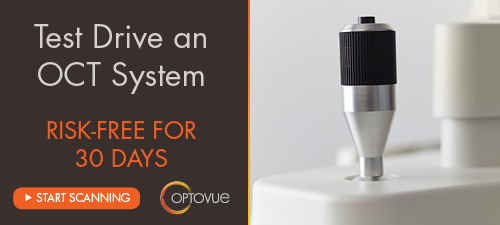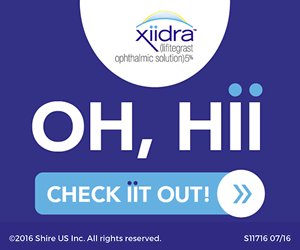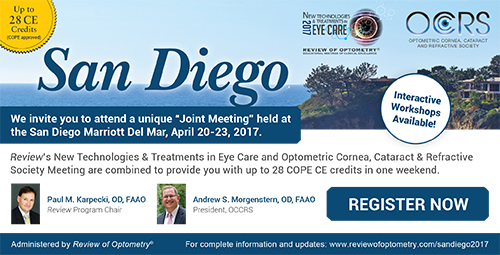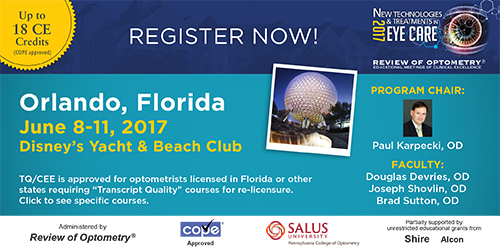
A
weekly e-journal by Art Epstein, OD, FAAO
Off the Cuff: The End Is Nigh…or Is It?
On this week’s Power Hour, my good friend and practice management guru Gary Gerber presented “Optometry is doomed—and that's a good thing.” While I agree with Gary that our profession is headed for very turbulent times, I remain unconvinced that this will be a good thing. In fact, I fear that if we don't soon wake up, things will quickly go from bad to catastrophic for many in our profession. How can you ensure your own survival? First, be different. Offer services that your competitors either can’t or won’t. Everyone can sell products, but only you and your staff can make the practice experience unique. Always be human, and treat patients as you would want yourself or your family to be treated. Connect to patients to create an unbreakable emotional bond. Finally, understand that technology is important, but leveraging it to empower patient loyalty is even more important. That takes time and a human connection that your competition is unlikely to be able to create.
|
|||||
|
|||
| Monitoring the Course of MS With Optical Coherence Tomography | ||||
The retinas of patients with multiple sclerosis (MS), as part of the central nervous system (CNS), display inflammatory and neurodegenerative changes. There is increasing evidence suggesting that retinal changes, and in particular neurodegeneration, mirror global CNS alterations in MS. Spectral-domain optical coherence tomography (SD-OCT) is an inexpensive, rapid, noninvasive, and reproducible imaging technique that generates high-resolution images of tissues such as the retina. An advantage of SD-OCT over magnetic resonance imaging techniques in the assessment of neurodegeneration may be its sensitivity to capture changes at the individual patient level. Several studies demonstrate that changes within the inner retina (primarily as a reflection of optic neuropathy), as assessed by OCT, correlate with reduced quality of life, visual dysfunction and global disability in MS. Moreover, longitudinal studies suggest that inner retinal thinning is an early phenomenon in MS and that retinal thinning may occur independent of previous symptomatic episodes of optic neuritis, significantly correlating with inflammatory disease. Preliminary studies suggest that MS disease-modifying therapies may have differential effects on OCT-determined rates of retinal atrophy, supporting a potential utility for OCT to help investigate the neuroprotective benefits of disease-modifying therapies in MS. |
||||
SOURCE: Brandt AU, Martinez-Lapiscina EH, Nolan R, et al. monitoring the course of ms with optical coherence tomography. Curr Treat Options Neurol. 2017;19(4):15. |
||||
 |
||
| Comparison of New Icare HOME With Goldmann Applanation Tonometer | ||||
A total of 130 subjects with suspected or confirmed glaucoma in an outpatient clinic were examined to compare measurements from an Icare HOME rebound self-tonometer compared with those from a Goldmann applanation tonometer (GAT). Intraocular pressure (IOP) was measured using an Icare HOME unit by an ophthalmologist and by subject participants, and using a GAT by an ophthalmologist. The Icare HOME self-measurement (Icare HOME performed by the patients [HOMEp]) was compared with those taken by the specialist using that unit and a GAT. In total, 128 participants (98%, 128/130) were able to correctly conduct self-measurements. Of the 128 participants, the mean IOP was 12.28mm Hg ±2.8mm Hg (range, 7mm Hg to 20mm Hg) via GAT, 12.8mm Hg ±3.7mm Hg (range, 6mm Hg to 24mm Hg) with HOMEp and 13.1mm Hg±3.8mm Hg (range, 6mm Hg to 25mm Hg) by Icare HOME specialist measurement (Icare HOME performed by the ophthalmologist [HOMEo]). The mean difference between HOMEp and HOMEo was 0.21mm Hg. The mean difference between the HOMEp and GAT measurements was 0.70mm Hg, and between the HOMEo and GAT measurements was 1mm Hg. The IOP difference between the HOMEp and GAT measurements was >3mm Hg in 9.4% of cases (12/128) and >5mm Hg in 2.3% of cases (3/128). A positive correlation was found between the central corneal thickness (CCT) and each of the three IOP values. The difference between HOMEp and GAT values was significantly increased with increasing CCT, indicating that a 10% increase in CCT predicted a 1.2% increase in the difference. Researchers concluded that the Icare HOME tonometer was feasible for use in self-monitoring of IOP. They added that Icare HOME tonometry measurements tended to overestimate IOP relative to GAT measurements. |
||||
SOURCE: Takagi D, Sawada A, Yamamoto T. Evaluation of a new rebound self-tonometer, Icare HOME: comparison with goldmann applanation tonometer. J Glaucoma. 2017; Mar 31. [Epub ahead of print]. |
||||
 |
||
| Impact of Refractive Error on People's Well-being | ||||
This study explored the impact of refractive error on adults, particularly after correction. The study aimed to explore the impact of refractive error on people's quality of life through in-depth telephone and face-to-face, semi-structured interviews. Forty-eight adults with refractive errors (including presbyopia) were recruited from the Flinders Vision, the Ashford Advanced Eye Care and among Flinders University staff and students in South Australia. The interviews were audio-recorded, transcribed verbatim, coded and analyzed using thematic analysis. The median age of the participants was 49 years (minimum: 22 years; maximum: 76 years). Most of them were female: (29, 59%). Most of them (n=36; 75.0%) had myopia followed by hyperopia (n=12;25.0%). Twenty-two (45.8%) participants had astigmatism. Similarly, 23 (47.9%) were presbyopes. Most of the participants (39; 81.3%) wore glasses, 17 (35.4%) used contact lenses and 17 (35.4%) had undergone refractive surgery. A total of 2,367 comments were coded. Thematic analysis resulted in six themes that informed about quality-of-life issues in people with refractive error. Concerns about cosmetic appearance, personal health and safety, difficulties in day-to-day activities, and inconveniences rendered in daily life were identified as the most important themes. Investigators wrote that the findings enhanced clinicians’ understanding on issues important to people with refractive error. They added that the quality-of-life issues identified could be used to develop a refractive, error-specific item bank. |
||||
SOURCE: Kandel H, Khadka J, Goggin M, et al. A pair of glasses and beyond: impact of refractive error on people's well-being. Clin Exp Ophthalmol. 2017; Mar 31. [Epub ahead of print]. |
||||
 |
||
| News & Notes | |||||||||
EyePrintPRO Expands U.S. & Canadian Provider Network
|
|||||||||
| Imprimis Acquires License to Ophthalmic Formulation for DED Imprimis Pharmaceuticals entered into a licensing agreement for the exclusive worldwide rights to Klarity, a patented, ophthalmic topical solution and gel technology for patients with dry eye disease. Designed to protect and rehabilitate the ocular surface following ophthalmic surgery or contact lens wear, or for use in individuals with moderate to severe DED, The preservative-free offering was developed by Richard L. Lindstrom, MD, a world-renowned cataract and refractive surgeon, inventor and consultant. It can be formulated to any viscosity, ranging from a topical drop or gel to a dispersive viscosurgical device. Under the terms of the agreement, Imprimis will pay Dr. Lindstrom an upfront fee, milestone payments and royalty payments on product sales. Read more. |
|||||||||
| Paragon Announces Educational Partnerships Paragon Vision Sciences entered into a series of educational partnership programs with several research institutions and organizations devoted to advancing eye care practitioner education about myopia. The partners include: •Myopia Control Clinic at University of California, Berkley (UCB) •Vision Research Institute at the Michigan College of Optometry •Scleral Lens Education Society •International Academy of Orthokeratology Read more |
|||||||||
| Stereo Optical Adds Tests to Digital Vision Screener Stereo Optical, a division of Essilor Instruments, released new tests for Optec Plus—a smart vision screener that includes a library of tests administered with a user-friendly interface in a single machine. The glare recovery test and existing tests under the new glare condition added to the software are useful for quantifying vision loss under the glare condition caused by cataracts or a corneal scar. These tests may be integrated into customized protocols to allow for more comprehensive pre-testing to improve practice flow. Optec Plus with glare and glare recovery made its North American debut at International Vision Expo East. |
|||||||||
| Patients Report Positive Experience in Dextenza Study Ocular Therapeutix announced positive results from a patient experience study of Dextenza (dexamethasone insert) 0.4 mg for intracanalicular use. The study, published in Patient Preference and Adherence, evaluated the overall patient experience and perceived value of Dextenza following cataract surgery. Dextenza is a hydrogel-based drug-eluting intracanalicular insert that incorporates the FDA-approved corticosteroid dexamethasone as the active ingredient. The retrospective study was conducted with 25 patients who had received active treatment in the company’s Phase III clinical trials of Dextenza for treatment of post-surgical ocular pain and inflammation. All patients reported that the intracanalicular insert was comfortable, 96% reported the insert was extremely or very convenient compared with topical eye drops on a tapered schedule and 92% reported the highest level of overall product satisfaction, with eighty-eight percent 88% saying they would request the insert if they were to undergo cataract surgery again. Read more. |
|||||||||
|
Optometric Physician™ (OP) newsletter is owned and published by Dr. Arthur Epstein. It is distributed by the Review Group, a Division of Jobson Medical Information LLC (JMI), 11 Campus Boulevard, Newtown Square, PA 19073. HOW TO ADVERTISE |





